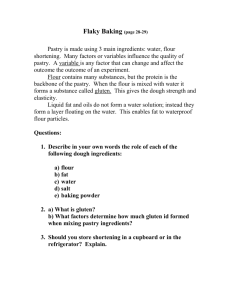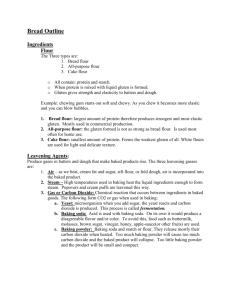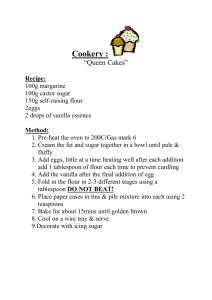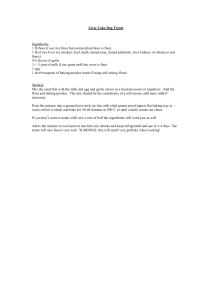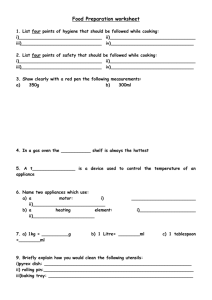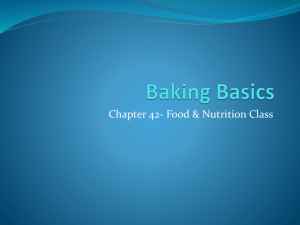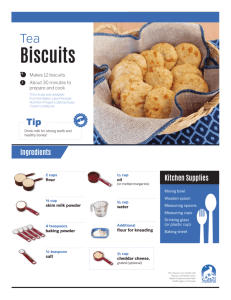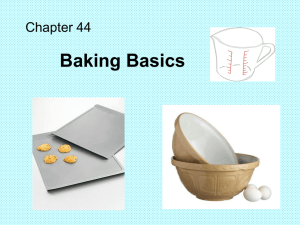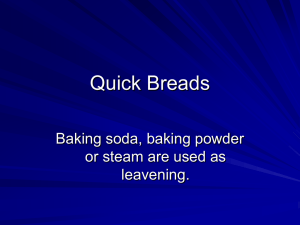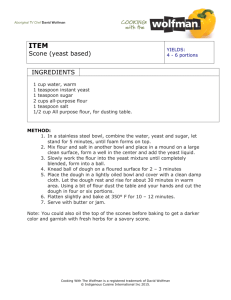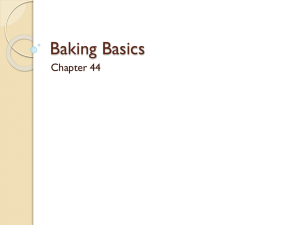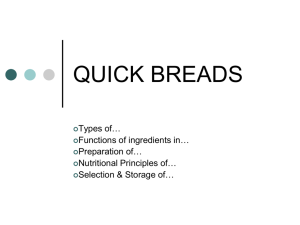baking - Hashley
advertisement
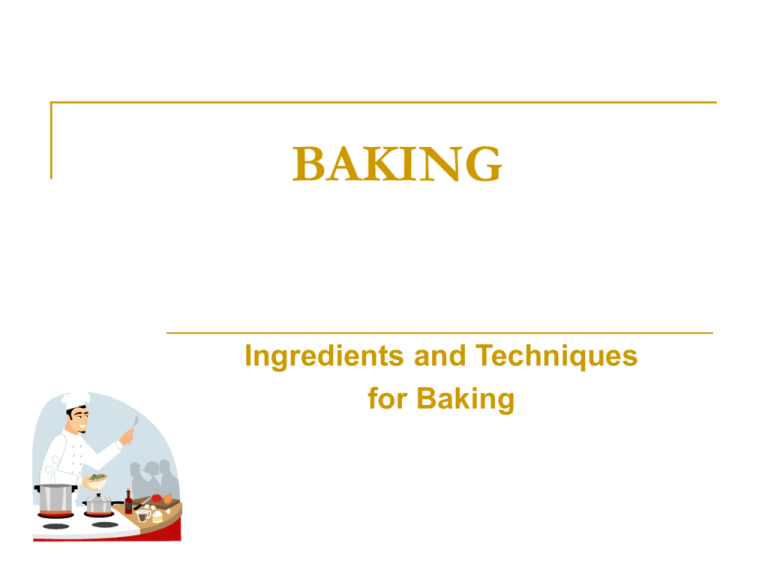
BAKING Ingredients and Techniques for Baking Ingredient Basics Flour Liquid Leavening Agents Fat Sweeteners Eggs Flavoring Flour Proteins and starch you find in nearly every baked product The protein in flour is called gluten What is Gluten: Protein that affects the texture of baked products. This gives a baked product it’s structure Types of Flour All-Purpose Flour Bread Flour Cake Flour Self-Rising Flour Bread Flour Strong gluten level Used for making breads, hard rolls, or any product that requires high gluten Cake Flour Low gluten Pure white color Used for cakes and other delicate baked goods All Purpose Flour Seen mostly in retail stores Most popular in American Kitchen Formulated to be weaker than bread flour so it can be used for pastries Liquid Plays role of physical & chemical changes Gluten can not be formed without liquid Milk and Water are most commonly used Leavening Agents This triggers a chemical reaction causing a baked product to rise Common Leavening Agents Air Steam Yeast Baking Soda Baking Powder Yeast Microorganism that produces carbon dioxide gas as it grows It needs food in order to grow (flour, sugar, liquid, and a warm temperature) Baking Soda Produces carbon dioxide gas when liquid is added Note: recipe must include an acidic product (buttermilk, honey, chocolate) Keep out of a moist atmosphere, loses leavening power after it gets wet Remember Volcanoes? Baking Powder Making powder + powdered acid (Example: cream of tarter) Require mixing and heating to become active and create carbon dioxide Q. If you bake a Cake and it doesn’t rise what may have happened? Fat Adds richness, flavor, and tenderness to baked products. They can be solid or liquid Types of fat Shortening Butter or Margarine Oils Lard Sweeteners Helps make products tender, adds sweetness and flavor, and helps crust brown. (Sugar is most commonly used) Types Granulated white sugar Brown sugar Honey Corn syrup Powder Sugar Molasses Eggs Add flavor, nutrients, richness, color, and structure to baked products. When beaten eggs add air to mixture To reduce fat add 2 egg whites in place of 1 whole egg Flavoring Fruits, vegetables, and nuts add nutrients to baked goods Extracts are flavorings in liquid form (Vanilla and Almond are common) Combining Ingredients The amount of liquid in relation to the amount of flour determines whether a mixture is a dough or batter. Pour VS. Drop Pour Batters are thin enough to pour Example: cakes, waffles, and pancakes) Drop Batters are thick and usually spooned into pans Example: muffins and cookies Soft Dough VS. Stiff Dough Soft Doughs are soft and sticky but can be touched and handled (Examples: rolled biscuits, yeast breads and rolls) Soft Dough VS. Stiff Dough Stiff Dough is firm to touch easy to work with and cut (Examples: pie crust and some cookies
